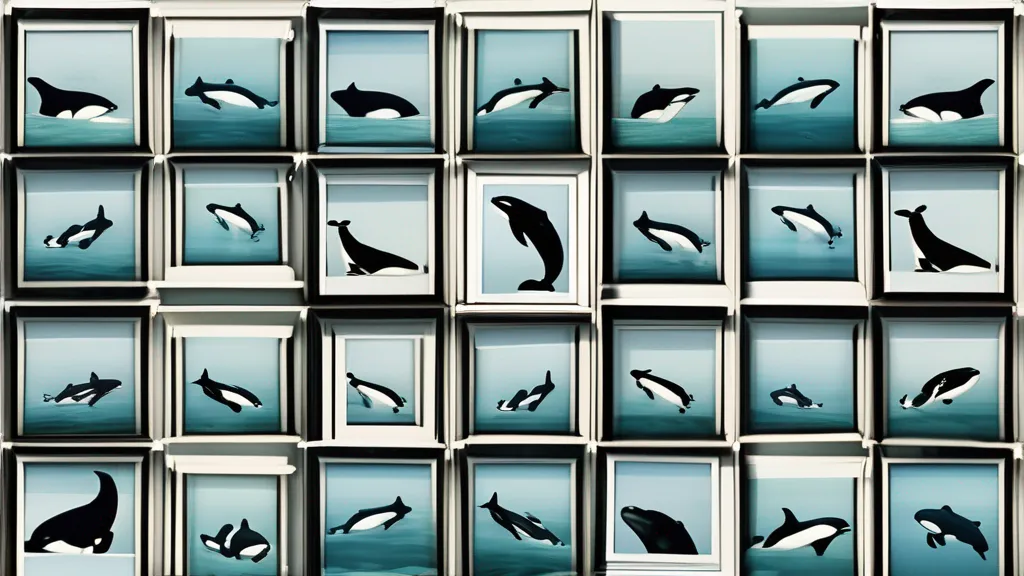The Intricate Dance of Survival: Orca Hunting Techniques Revealed
Unprecedented Footage Captures Orca Training Techniques

- BBC’s ‘Parenthood’ unveils orcas’ practice hunting techniques.
- Advanced technology captures unique orca behavior for the first time.
- Orcas’ playful nature includes complex social and hunting strategies.
- Insights into the role of orcas in marine ecosystems.
The Intricate Dance of Survival: Orca Hunting Techniques Revealed
In the vast expanse of our oceans, a relentless dance of survival unfolds, orchestrated by one of the most intelligent marine predators—orca whales. The BBC’s groundbreaking nature series, ‘Parenthood,’ has captured this dance in an unprecedented manner, revealing for the first time the brutal yet fascinating training sessions that orca pods engage in to hone their hunting skills. The series uncovers a unique aspect of orca behavior—practice hunts where young orcas learn to ‘pretend-drown’ each other, a technique crucial for their survival in the wild.
Unveiling the Orca’s Hunting Strategy
The footage, narrated by the iconic Sir David Attenborough, shows a young orca playing the role of prey while the rest of the pod practices surrounding it and submerging its blowhole to simulate drowning. This practice is not merely play; it is a vital training session that equips orcas with the skills necessary to hunt the largest animals on Earth—blue whales.
The orcas’ ability to hunt such formidable prey is a testament to their intelligence and adaptability. Blue whales (Balaenoptera musculus), the largest animals ever to have lived, present a daunting challenge even for a predator as skilled as the orca. Yet, these whales are not always the primary target of orcas. Pods typically prey on giant and colossal squids, but when the opportunity arises, they do not shy away from taking on a blue whale, demonstrating both their prowess and the playful yet lethal nature of their hunting techniques.
The Role of Technology in Wildlife Filming
To capture these rare and intimate moments of orca behavior, filmmakers employed cutting-edge technology. Specialized underwater stabilizing devices, known as gimbals, and tow cameras were utilized to keep pace with the swift movements of the hunting orca pack. This technological innovation allowed the crew to gain new insights into the orcas’ hunting strategies, offering a glimpse into the complex social structures and coordination required for such an enterprise.
The filming took place off the coast of Bremer Bay in Western Australia, a hub for orca activity. This region is home to around 200 orcas, the largest known congregation in the Southern Hemisphere. Typically, these pods contain six to 20 individuals, each playing a role in the intricate ballet of hunting, survival, and familial teaching.
Understanding Orca Behavior: From Play to Purpose
While the footage highlights the orcas’ practice of pretend-drowning as a hunting technique, it also sheds light on their complex social behaviors. Experts suggest that orcas may hunt large whales not just for sustenance, but also for the thrill of the chase. Nancy Black, a marine biologist, likens their behavior to that of cats playing with prey. This playful yet brutal approach underscores the dual nature of orcas as both intelligent strategists and thrill-seeking hunters.
However, targeting an adult blue whale presents significant risks, prompting orcas to focus on more vulnerable targets, such as calves or sick individuals. This strategy not only increases their chances of success but also minimizes the danger to the pod members.
The Broader Context of ‘Parenthood’
The series ‘Parenthood’ is a five-part exploration of the various strategies animal parents use to ensure the survival of their offspring. From the self-sacrificing African social spider to the meticulously coordinated orca hunting practices, the series offers a profound look at the lengths to which animals go to pass on their genes. Jeff Wilson, the series’ director, highlights how these stories of survival and sacrifice offer a window into the natural world, encouraging viewers to appreciate the intricate and often harsh realities of life in the wild.
Diverse Perspectives on Orca Behavior
Orca behavior, particularly their interactions with humans and other species, is a subject of ongoing research and debate. Some experts believe that the complex social structures of orca pods resemble those of human communities, with distinct roles, communication methods, and social hierarchies. Others argue that the playful nature of orcas, evidenced by their interactions with boats and other marine life, reflects a depth of intelligence and curiosity that challenges our understanding of non-human consciousness.
This diverse range of perspectives enriches the discussion about orcas, prompting further investigation into their behaviors and environmental impacts. As apex predators, orcas play a crucial role in maintaining the balance of marine ecosystems, and understanding their behaviors can provide valuable insights into the health of our oceans.
Conclusion: Insights and Implications
The revelations from the ‘Parenthood’ series offer both a captivating look at the strategies of one of nature’s most formidable predators and a reminder of the complex interplays that govern life in the ocean. As we continue to explore and understand these dynamics, the role of technology in wildlife conservation and documentation becomes ever more critical. By bringing these unseen behaviors to light, we gain a deeper appreciation for the intelligence and adaptability of orcas and the intricate ecosystems they inhabit.
As viewers and global citizens, we are prompted to reflect on the broader implications of these findings for conservation efforts and our relationship with the natural world. What other secrets might the ocean hold, waiting for the right combination of technology and curiosity to reveal them?
References
Call to Action
As we delve deeper into the mysteries of the ocean, how can we leverage technology to further understand and protect these magnificent creatures and their habitats? Join the conversation and share your thoughts on the future of wildlife conservation.